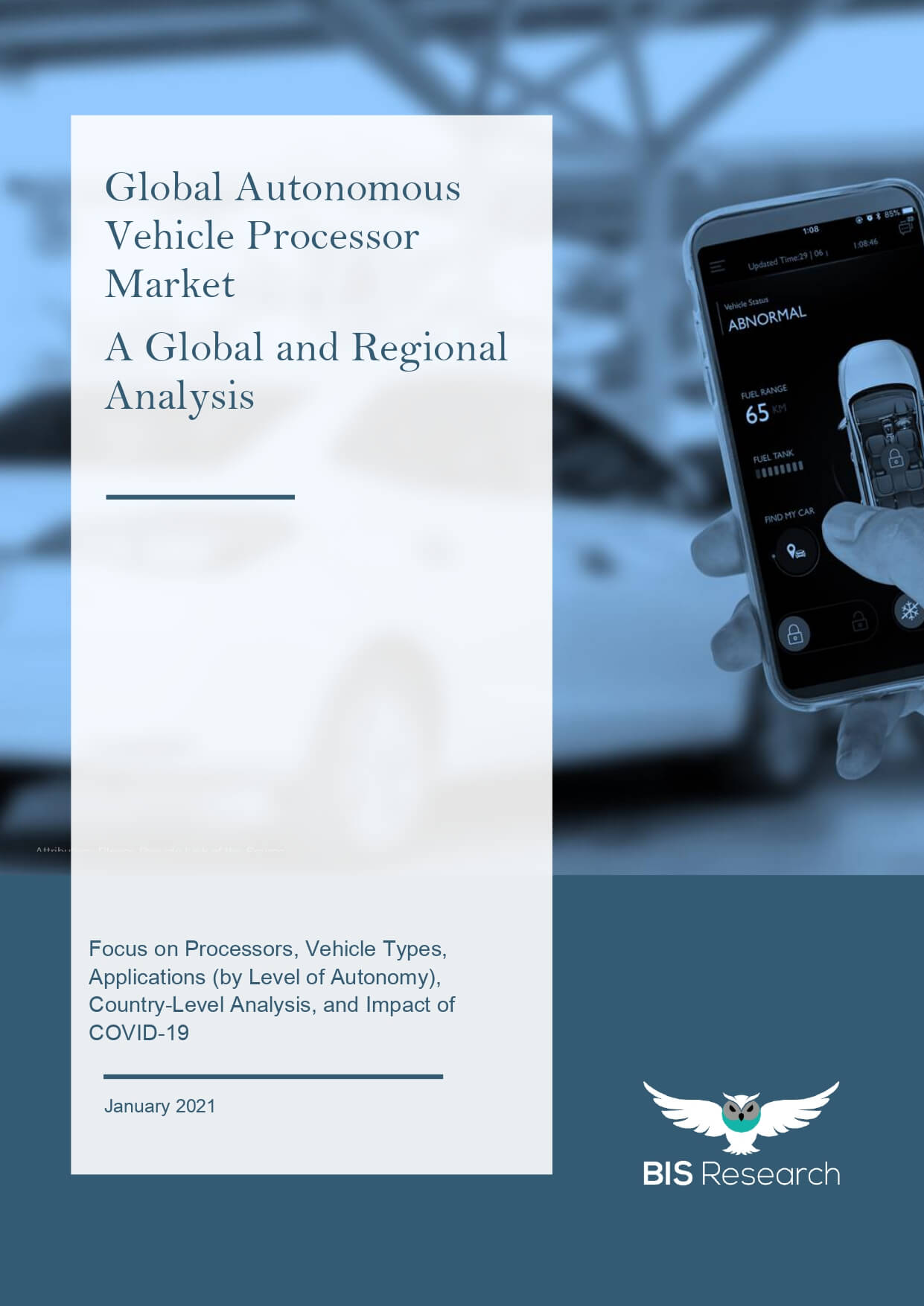Description
Market Report Coverage – Autonomous Vehicle Processor
Market Segmentation
• Application Type – Level 2, Level 3, Level 4, and Level 5
• Vehicle Type – Passenger Vehicles and Commercial Vehicles
Regional Segmentation
• North America – U.S. and Canada
• Europe – Germany, Netherlands, Sweden, and Rest-of-Europe
• Asia-Pacific and Japan (APJ) – South Korea, Japan, and Rest-of-APJ
• U.K.
• China
• South America
• Middle East and Africa (MEA)
Growth Drivers
• Transportation as a service is poised to accelerate the demand for new autonomous vehicle processors
• Increasing push from the government to develop connected and autonomous infrastructure
Market Challenges
• High-cost structure of autonomous vehicles and their processors
• Lack of advanced infrastructure in developing countries
• Autonomous vehicle protection from hackers is of paramount concern
• Global pandemic impacted the overall supply chain of automotive industry
Market Opportunities
• Tech manufacturers entering into autonomous processors business segment
• Autonomous vehicle platooning technology expected to grow exponentially
Key Companies Profiled
Intel Corporation, NXP Semiconductors N.V., Tesla, Inc., NVIDIA Corporation, Texas Instrument Incorporated, KALRAY Corporation, Renesas Electronic Corporation, Qualcomm Technologies, Inc., Xilinx, Inc., Hailo Technologies Ltd, Ambarella, Inc., AImotive
Key Questions Answered in this Report:
• What are the underlying structures resulting in the emerging trends within the autonomous vehicle processor market?
• How are automotive OEMs and other players entering the market?
• How are the emerging technologies driving the growth of the autonomous vehicle processor market?
• What are the views of CXOs and senior management of the autonomous vehicle processor companies operating in the space?
• Which autonomous vehicle processor technology is expected to be leading the market by 2030?
• What were the market volume, value, and pricing of the leading segments and subsegments of the market in 2019, and how is the market estimated to grow during the forecast period?
• How is the industry expected to evolve during the forecast period 2020-2030?
• How is the industry impacted by the COVID-19?
• What are the key strategies that have been implemented by the key players to sustain in the competitive market?
Market Overview
The report constitutes an in-depth study of the global autonomous vehicle processor market, including a thorough analysis of the market across different applications (Level 2, Level 3, Level 4, and Level 5). The study also presents a detailed analysis of the market trends and the market size for the period 2019 to 2030, wherein 2019 is the base year, revenue for the year 2020 is estimated, and the years from 2020 to 2030 constitute the forecast period. The report covers all the prevalent market strategies that are expected to play a major role in the growth of the market over the forecast period 2020-2030. It also highlights various drivers, restraints, and opportunities, which are expected to influence the market’s growth during the forecast period 2020-2030. The scope of this report is focused on the different technologies, vehicles, and level of autonomy, and their market dynamics, growth prospect mapping, and country-wise analysis.
The study provides a holistic perspective on market growth in terms of revenue estimates across different regions and countries. The report provides a cross-section analysis of the autonomous vehicle processor market by product and application in terms of market estimates and projections for different countries across different regions. Additionally, the research also covers regional and country-wise analysis for the market in various regions such as North America, Europe, Asia-Pacific and Japan (APJ), China, the U.K., MEA, and South America. The research is based on extensive primary interviews (industry leaders and market players) and secondary research (a host of paid and unpaid databases), along with various analytical tools that have been used to build the forecast and predictive models.
The global autonomous vehicle processor market accounted for $5.07 billion in terms of value in 2019 and is expected to reach $42.20 billion by 2030. The market is anticipated to grow at a CAGR of 22.98% during the forecast period 2020-2030. The North America region is expected to grow at a significant growth rate of 24.09% during the forecast period 2020-2030.
Competitive Landscape
The global autonomous vehicle processor market’s competitive landscape consists of different strategies undertaken by key players across the e-mobility industry to gain traction and market share presence. Some strategies adopted by autonomous vehicle processor manufacturers are new product launches, business expansions, mergers, partnerships, and collaborations. Among all these strategies adopted, partnerships, acquisitions, and mergers have led to the popular choice of the strategy implemented in the autonomous vehicle processor market’s competitive landscape. Some of the most prominent ecosystem players are Intel Corporation, Qualcomm Technologies, Inc., Tesla, Inc., and NVIDIA Corporation. Two of the most prominent examples of mergers and acquisitions are NVIDIA Corporation and ARM Inc.; in September 2020, the company announced its plans to acquire ARM Limited from SBG and Softbank at $40 billion. Intel Corporation leads the second-largest acquisition of the industry. Intel acquired Mobileye of Israel in March 2017 for $15.7 billion. The third-largest acquisition is in the approval stage; Xilinx, Inc. is being acquired by AMD, Inc. in FY2021 and will expand AMD’s processor portfolio along with the target market.
Product launches are another preferred strategy adopted by the market players to enhance their product offerings and global footprint. For instance, in December 2019, NVIDIA Corporation launched a new and advanced autonomous driving platform called DRIVE AGX Orin. The Orin SoC consists of NVIDIA’s GPU, Arm Hercules CPU, and the power to perform 200 trillion operations per second, which is nearly 7x the performance of Xavier SoC.



Reviews
There are no reviews yet.